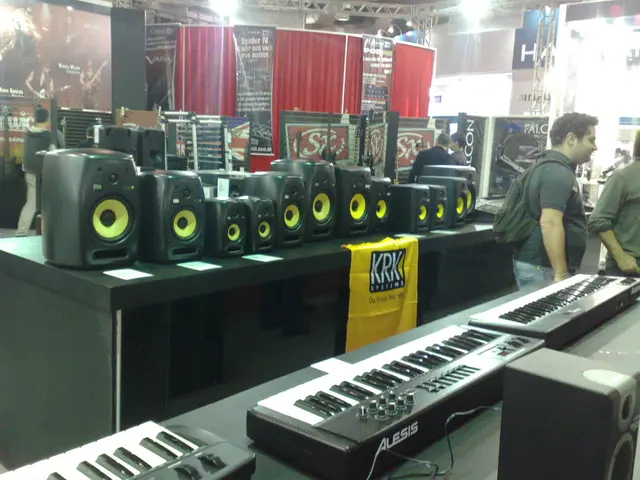Exploring subatomic particles within Greenland's icy expanse using advanced radio technology
Radio Neutrino Observatory Greenland (RNO-G) Begins Installation at Summit Station
The Radio Neutrino Observatory Greenland (RNO-G), a groundbreaking project aimed at detecting elusive cosmic neutrinos, has commenced its installation at the Summit Station research facility in Greenland.
RNO-G, a pioneering endeavour, will be the first large-scale radio neutrino detector. More than a dozen partners, including universities and DESY, are involved in this ambitious project.
Neutrinos, ultralight elementary particles that hardly ever react with matter, are the focus of RNO-G. The scientists plan to install 35 antenna stations, each 1.25 kilometers apart, around Summit Station on the Greenland ice sheet.
The individual stations of RNO-G can operate autonomously, powered by solar panels, and will be connected with each other via a wireless network. This network will allow the stations to collaborate in the search for these elusive particles.
The installation of equipment for RNO-G is continuing until mid-August. The advantage of using radio waves is that ice is fairly transparent to them, allowing for the detection of radio signals over distances of several kilometers.
DESY, a member of the Helmholtz Association, Germany's largest scientific association, and funded by the German Federal Ministry of Education and Research (BMBF) and the German federal states of Hamburg and Brandenburg, is one of the partners in the RNO-G project. DESY is one of the world's leading particle accelerator centres, investigating the structure and function of matter.
Previous smaller-scale experiments have already shown that it is possible to use radio waves to detect cosmic particles. RNO-G relies on a new method of detecting very high-energy cosmic neutrinos using radio antennas.
The two systems, IceCube and the array of radio antennas for RNO-G, complement each other in detecting different energy ranges of cosmic neutrinos. IceCube's optical detectors register neutrinos with energies up to about a quadrillion electron volts, while the radio antennas will be sensitive to energies from about ten quadrillion to a hundred quintillion electron volts.
The logistical challenge of carrying out the installation during the pandemic has required teams to quarantine at various locations before arriving at Summit Station. A rare collision between a neutrino and an atom can produce an avalanche of secondary particles, many of which are electrically charged. This cascade of charged secondary particles emits radio waves that can be picked up by the antennas.
The institutions involved in the IceCube-Gen2 expansion, which plans the installation of radio wave antennas at the South Pole, include the IceCube Collaboration comprising multiple international research institutions mostly focused on astrophysics and particle physics. These typically include universities and national laboratories from various countries such as the United States, Germany, and others, coordinated through the IceCube Neutrino Observatory project.
In summary, the installation of RNO-G at Summit Station marks a significant step forward in the quest to understand cosmic neutrinos. With the help of DESY and other partners, the project promises to uncover new insights about these elusive particles and their role in the universe.
Read also:
- Peptide YY (PYY): Exploring its Role in Appetite Suppression, Intestinal Health, and Cognitive Links
- Toddler Health: Rotavirus Signs, Origins, and Potential Complications
- Digestive issues and heart discomfort: Root causes and associated health conditions
- House Infernos: Deadly Hazards Surpassing the Flames








